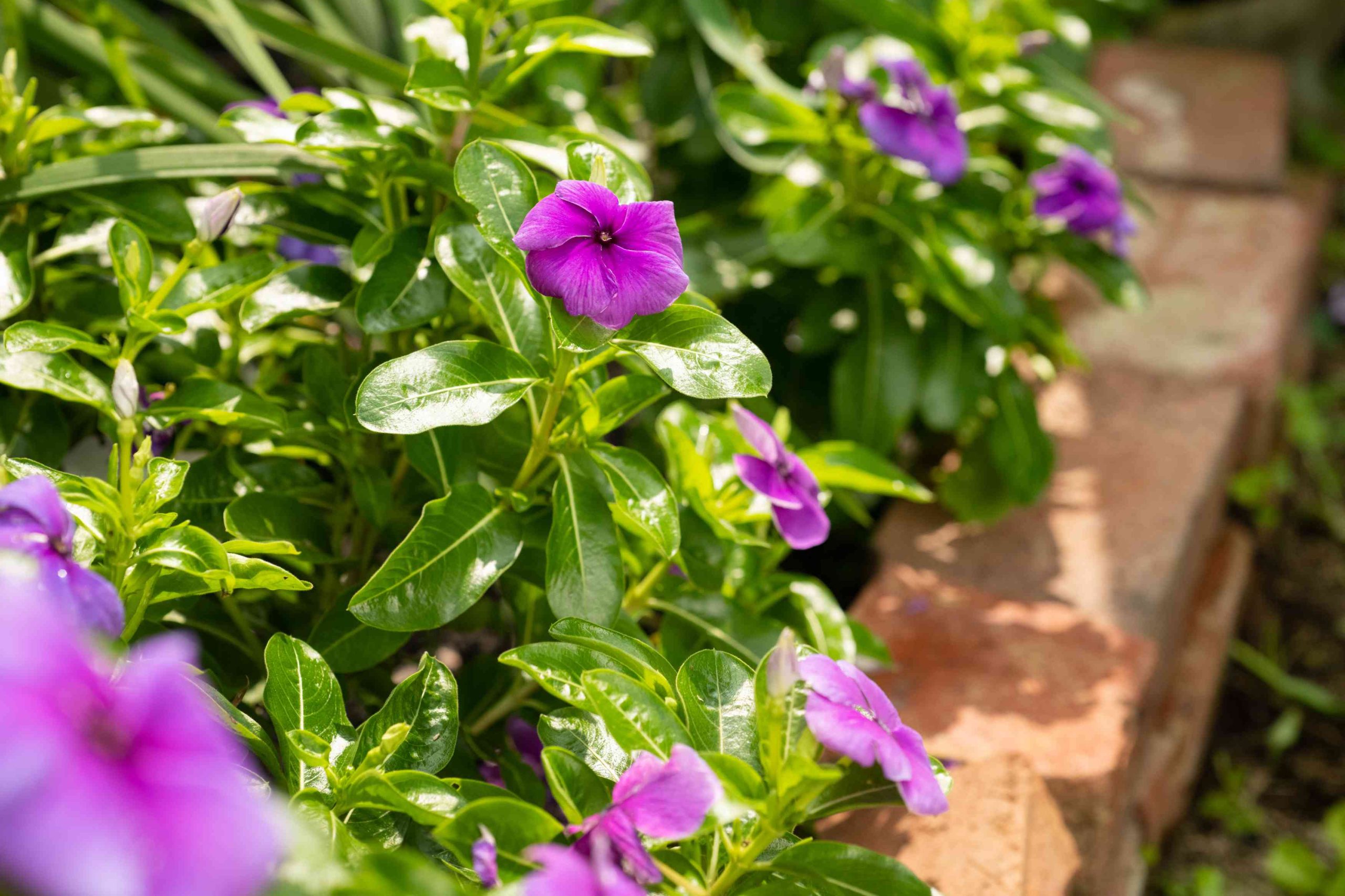With their cheerful flowers and trailing vines, vinca plants add a pop of color to gardens and landscape beds. Also known as periwinkle, these hardy plants bloom from spring until frost Providing proper care during the cold winter months is key to ensuring vinca returns healthy and vigorous when warm weather arrives again
Follow these tips to overwinter vinca plants and have them thrive year after year.
Pruning Vinca for Winter
Pruning vinca in preparation for winter is not an intensive process. These adaptable plants need minimal pruning to remain lush and healthy.
Here are a few pruning tips for winter:
- Lightly trim long vines in fall to reduce wind damage, Don’t cut back severely,
- Remove any dead or damaged growth. This prevents disease issues.
- Cut away portions that are especially overgrown to shape the plant if needed.
- Prune off any remaining flower heads to neaten appearance.
- Clean pruning shears with disinfectant between cuts to avoid spreading disease.
- Leave most of the plant intact to allow it to die back naturally as temperatures drop.
- No need to prune roots when overwintering vinca in the ground.
Winter Care for Potted Vinca
Vinca grown in containers requires a bit more care over winter:
- Move pots to a sheltered area out of harsh winds and ice. An unheated garage or porch works well.
- Stop fertilizing and reduce watering frequency for dormant plants.
- If temperatures may dip below freezing, place smaller pots on trays to prevent freeze/thaw cycles in the soil.
- Once plants are fully dormant, stop watering until spring growth resumes.
- Prune away dead foliage in late winter before new growth begins.
Protecting Vinca Planted in the Ground
Vinca planted directly in garden soil is quite winter hardy but still benefits from some protection:
- Mulch around the base after the ground freezes to insulate roots. 2-3 inches of shredded bark or leaves is ideal.
- If possible, temporarily cover with a fabric row cover or layer of evergreen branches to shield from wind. Avoid heavy snow accumulation.
- Carefully remove any coverings in early spring as temperatures warm to allow new growth to emerge.
- Scrape away mulch once winter has passed so the soil can warm effectively.
Spring Revival for Overwintered Vinca
To rejuvenate overwintered vinca plants for the new growing season:
- Gently rake away protective mulch from in-ground plantings.
- If plants are slow to leaf out, don’t assume they are dead – allow more time.
- Trim away any remaining dead growth or winter damage once plants are actively growing.
- Resume regular watering as plants come out of dormancy.
- Begin fertilizing again to support spring growth. Use a balanced liquid fertilizer.
- Repot container plants in fresh soil if roots have filled the pot. Prune back extra long vines.
- Remove any winter protection on potted plants brought indoors once risk of frost has passed.
Dealing With Winter Dieback
Occasionally, vinca may experience significant dieback over winter if conditions are unusually harsh, wet, or fluctuating. Here are tips for handling dieback:
- In spring, cut all vines back to about 2 inches above soil level using clean shears.
- Rake away mulch and debris from the base of the plant so it can restart growth.
- Water and fertilize as normal in spring to encourage regrowth from the roots up.
- It may take until midsummer for the plant to fully regenerate from severe dieback. Be patient.
- If regrowth is minimal, the plant may have succumbed to winter damage. Consider replanting.
Conclusion
Providing simple care over winter allows vinca plants to return refreshed each spring. A light pruning before cold weather hits combined with insulating mulch or coverings protects in-ground plantings. Potted vinca benefit from moving into a protected spot for winter dormancy. With a little TLC over the cold months, this popular groundcover will continue gracing your landscape for years.
5 Tips For Growing Vinca Plant in Winters…
FAQ
Can vincas come back every year?
Do you cut back vinca for winter?
What temperature is too cold for vinca?
- The Ultimate Guide to Growing Strawberries in Raised Beds - August 8, 2025
- No-Dig Garden Beds: The Easiest Way to Grow a Beautiful Garden - August 6, 2025
- How to Protect and Preserve Wood for Raised Garden Beds - August 6, 2025

